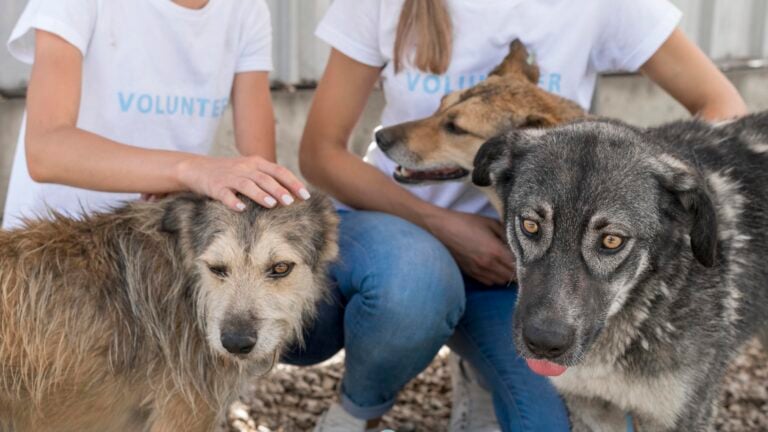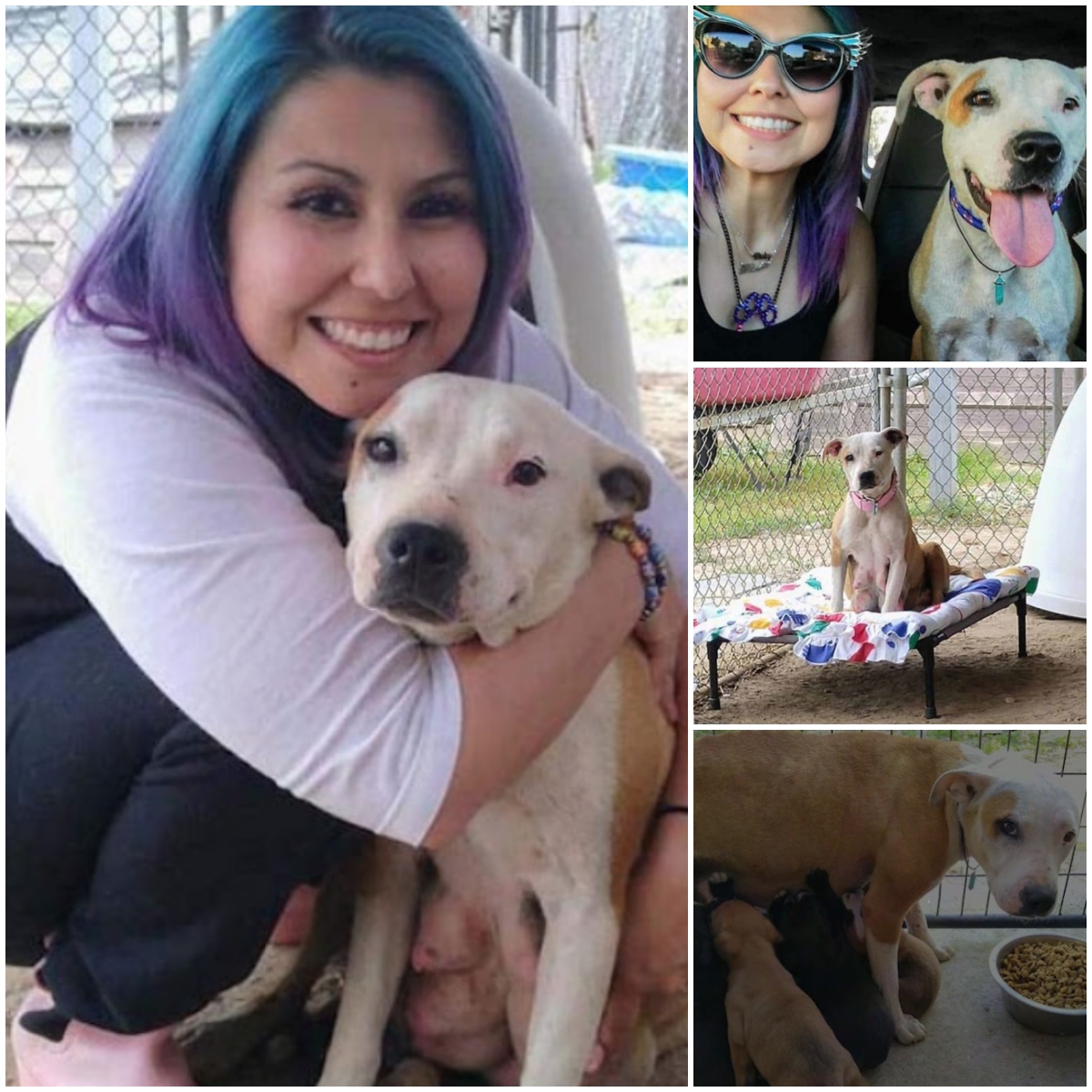In an absolutely devastating video, high-kill shelter staff member and shelter dog photographer Kayleigh (who goes by @blowfishblowfish on TikTok) shows herself adding dog after dog to the euthanasia list. Visiting an endless lineup of adorable pups that wag happily at the doors of their kennels when they see her approaching, Kayleigh shows how many sweet, healthy, adoptable dogs are euthanized at high-kill shelters and rescues in the United States.

While it might seem cruel or cold-hearted, choosing dogs for euthanasia is a real and necessary part of working in the shelter system. Overcrowding and overpopulation issues plague high-kill shelters and like it or not, having some shelter dogs euthanized ultimately increases the number of animals rescues can help. No one likes the job of selecting shelter pets for euthanasia, but high-kill shelters also save lives day in and day out while battling pet overpopulation.
So how do high-kill shelters choose which dog or cat to euthanize and which to save?
What is a high-kill shelter and why do they euthanize so many animals? Most state and county animal welfare organizations and publicly funded animal shelters are classified as “kill shelters.” Kill shelters are also “open admission shelters” and accept all dogs and cats surrendered to them, which means they often face overcrowding and must carefully allocate resources to avoid running out. Kill shelters can be further broken down into “low-kill” and “high-kill” shelters, but this classification can be somewhat arbitrarily assigned.

High-kill shelters account for the majority of euthanized shelter dogs, but they also rescue, rehabilitate, and find potential adopters for millions of pets every year. The benefit of being a high-kill or simply a kill shelter is a high live release rate—put simply, being able to save a high volume of animals by strategically choosing the ones that are most “adoptable” and euthanizing those that could be stopping other animals from getting the resources they need.
No-kill shelters are typically private animal rescues that have a hard intake limit. There are some publicly funded no-kill shelters, but most are privately funded.No-kill shelters will only accept as many cat and dog surrenders as they can reasonably handle, and do not use euthanasia as a population control tool. No-kill shelters will practice humane euthanasia in the case of abused and abandoned animals who are beyond medical treatment.
The obvious benefit of no-kill shelters is a guarantee that healthy adoptable animals will be cared for until they find a forever home. However, no-kill shelters must frequently turn away surrendered animals to avoid overcrowding and cannot save nearly as many animals as high-kill shelters.
Kill shelters and no-kill shelters differ only in their approach to intake and admissions, but both types of shelter are dedicated to saving as many animals as possible, combatting cruelty to animals, and promoting ethical pet ownership by providing services like spaying and neutering, education, veterinary and pet food resources, and more.
Also Read:Blind Dog Was On A 72-Hour Euthanasia Deadline, What Happens Next Saves His Life
If you’re reading this and recently had to surrender a pet you might be wondering: will the animal shelter euthanize my dog? How many shelter dogs are euthanized each year? How many shelter dogs are euthanized each day? “High-kill shelter” sounds pretty scary!
More than 6.5 million animals enter United States shelters and humane society facilities annually with almost equal numbers of cats and dogs, according to data from Shelter Animals Count. The good news is that most dogs that enter the animal welfare system find homes and are adopted. Around 6.1% of shelter dogs are euthanized yearly, but 93.9% become beloved family members. While these numbers may be shocking, the rates of euthanasia are going down.
“Each year, approximately 920,000 shelter animals are euthanized (390,000 dogs and 530,000 cats). The number of dogs and cats euthanized in U.S. shelters annually has declined from approximately 2.6 million in 2011,” says data from the ASPCA. “This decline can be partially explained by an increase in the percentage of animals adopted and an increase in the number of stray animals successfully returned to their owners.”

The most common reason animal services like shelters and humane societies euthanize adoptable dogs and cats is to combat overcrowding. Open admission shelters accept every animal that enters their facility, and sometimes that means they run out of space and resources. Euthanasia is often used to remove animals that are statistically less likely to be adopted and make room for more adoptable rescues.
There are a few other reasons dogs or cats might be euthanized in a high-kill shelter:
- Overcrowding
- Untreatable health issues and degenerative disease
- Contagious health issues
- Unmanageable behavior
- Age—older dogs may be euthanized to make space for younger dogs and puppies who are more likely to be adopted
Also Read:Senior Dog With a Looming Euthanasia Date Pleads for a Foster Home
Animal shelter staff members are often left with the devastating task of deciding which dogs will be euthanized and which dogs will live another day. Sometimes the decision is a little easier—when a dog is extremely sick, hasn’t responded to attempts at rehabilitation, or is well into their senior years. Other times, staff must use a combination of factors like breed, color, and level of training/sociability to select dogs for the euthanasia list. Sometimes even being shy or not outgoing with potential adopters can make a dog more likely to be euthanized.
Dog breeds that are frequently surrendered at shelters will often be among the first to be euthanized. The most common dog breeds in shelters include Siberian Huskies, German Shepherds, Australian Cattle Dogs, Chihuahuas, Pitbulls, and Hounds like the Coonhound and the Dachshund. Pitbulls are the most frequently abandoned and surrendered dog breeds and the most frequently euthanized breed in the US. In many cases, choosing which dogs to euthanize is a matter of supply and demand.

The decision to adopt a pet comes with lots of careful consideration—where will the pet sleep? Who will take care of the day to day responsibilities? What vet will you go to? One thing most people don’t think about is the pros and cons of pet adoptions from high-kill local shelters vs. private no-kill shelters. It’s important that there are people who support both high-kill shelters and no-kill shelters, but there are some distinct positive outcomes when people adopt dogs from kill shelters.
Here are just a few reasons you should choose to high-kill shelter dogs for adoption to support your local shelter and benefit the world of pets at large:
- Combat euthanasia: The reason high-kill shelters are “high-kill” is because they receive non-stop animal surrenders. High-kill shelters accept all animals surrendered to them and need to make space now and then. By considering adoptable dogs from high-kill shelters you can help to prevent a different animal from losing their spot at the shelter and being euthanized.
- Support other adoptable dogs: The adoption fee you’ll pay to bring home your new best friend will go right back into the shelter system to help rescue and support another animal searching for a home.
- Break the cycle of pet overpopulation: When you adopt from a shelter rather than purchasing from a breeder, you help to reduce the demand for puppies. Working to reduce demand will help to encourage dog breeders to be more hesitant when breeding their dogs and avoid adding more dogs to the endless cycle of purchase, surrender, adopt, or euthanize.
If you find a dog you love at a no-kill shelter, there’s also no shame in adopting there. No-kill shelters are a vital asset to high-kill shelters and often work in collaboration with local animal welfare groups to give shelter to dogs that are at risk of being euthanized.
A quick Google search for “high-kill shelter near me” or “no-kill shelter near me” will help you find local organizations and databases where you can see adoptable pets.

Even if you can’t adopt a dog right now, there are ways you can help high-kill shelters reduce their rates of euthanasia. Becoming a foster home and accepting foster pets from your local shelter can help free up space for new and existing residents. Donating to your local shelter can help them cover medical care, supplies, staffing costs, etc.
Something as simple as encouraging friends and family to adopt from the shelter instead of visiting a breeder can make a difference and help reduce the number of animals that lose their lives in the shelter system every year.
- Greater Birmingham Humane Society, Birmingham, Website
- Anchorage Animal Care and Control, Anchorage, Website
- Arizona Animal Welfare League, Phoenix, Website
- Humane Society of Pulaski County, Little Rock, Website
- Best Friends Animal Society, Los Angeles, Website
- Helen Woodward Animal Center, Rancho Santa Fe, Website
- Animal Haven, SoHo, Website
- San Diego Humane Society, San Diego, Website
- Sacramento SPCA, Sacramento, Website
- Humane Society Silicon Valley, Milpitas, Website
- East Bay SPCA, Oakland, Website
- Santa Barbara Humane, Santa Barbara, Website
- NKLA Pet Adoption Center, Los Angeles, Website
- Marin Humane Society, Novato, Website
- Pasadena Humane, Pasadena, Website
- Humane Society of Ventura County, Ojai, Website
- Friends of the Alameda Animal Shelter, Alameda, Website
- Wags and Walks, Los Angeles, Website
- Redwood Coast Humane Society, Gualala, Website
- Second Chance Animal Services, San Diego, Website
- Paw Works, Camarillo, Website
- Foothills Animal Shelter, Golden, Website
- MaxFund Animal Adoption Center, Denver, Website
- Connecticut Humane Society, Newington, Website
- Delaware SPCA, Stanton, Website
- Humane Society of Tampa Bay, Tampa, Website
- Peggy Adams Animal Rescue League, West Palm Beach, Website
- PAWS Atlanta, Decatur, Website
- Hawaiian Humane Society, Honolulu, Website
- Idaho Humane Society, Boise, Website
- TAPS No-Kill Animal Shelter, Pekin, Website
- PAWS Chicago, Chicago, Website
- Natalie’s Second Chance No Kill Dog Shelter, Lafayette, Website
- Cedar Bend Humane Society, Waterloo, Website
- Wayside Waifs, Kansas City, Website
- Lexington Humane Society, Lexington, Website
- Humane Society of Louisiana, New Orleans, Website
- Animal Refuge League of Greater Portland, Westbrook, Website
- BARCS Animal Shelter, Baltimore, Website
- Northeast Animal Shelter, Salem, Website
- Michigan Humane, Bingham Farms, Website
- Animal Humane Society, Golden Valley, Website
- Mississippi Animal Rescue League, Jackson, Website
- Humane Society of Missouri, St. Louis, Website
- Humane Society of Western Montana, Missoula, Website
- Nebraska Humane Society, Omaha, Website
- Heaven Can Wait Animal Society, Las Vegas, Website
- NHSPCA, Stratham, Website
- St. Hubert’s Animal Welfare Center, Madison, Website
- Animal Humane New Mexico, Albuquerque, Website
- Animal Haven, New York City, Website
- Bideawee, New York City, Website
- Brother Wolf Animal Rescue, Asheville, Website
- Central Dakota Humane Society, Mandan, Website
- Cleveland Animal Protective League, Cleveland, Website
- Oklahoma Humane Society, Oklahoma City, Website
- Oregon Humane Society, Portland, Website
- Philadelphia Animal Welfare Society (PAWS), Philadelphia, Website
- Providence Animal Rescue League, Providence, Website
- Charleston Animal Society, North Charleston, Website
- Sioux Falls Area Humane Society, Sioux Falls, Website
- Nashville Humane Association, Nashville, Website
- Austin Pets Alive!, Austin, Website
- Operation Kindness, Carrollton, Website
- Best Friends Animal Society, Salt Lake City, Website
- Humane Society of Chittenden County, South Burlington, Website
- Richmond SPCA, Richmond, Website
- Seattle Humane, Bellevue, Website
- Humane Society of Parkersburg, Parkersburg, Website
- Wisconsin Humane Society, Milwaukee, Website
- Cheyenne Animal Shelter, Cheyenne, Website
This list provides a broad range of no-kill shelters across most U.S. states. Let me know if you need further customization!
Also Read:Heroes Rescue 12-Year-Old Dog From Euthanasia—But Then They Make a Heartbreaking Discovery





